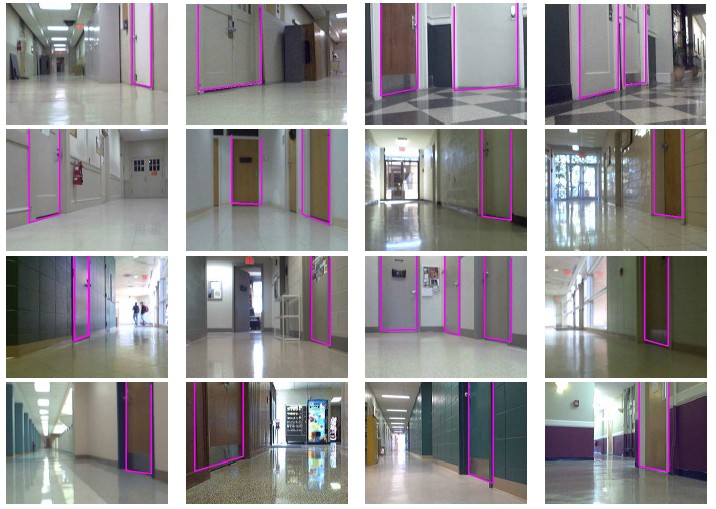
Zhichao Chen, Yinxiao Li and Stan Birchfield
Abstract:We present an algorithm to detect doors in images. The key to the algorithm's success is its fusion of multiple visual cues, including standard cues (color, texture, and intensity edges) as well as several novel ones (concavity, the kick plate, the vanishing point, and the intensity profile of the gap below the door). We use the Adaboost algorithm to determine the linear weighting of the various cues. Formulated as a maximum a posteriori probability (MAP) problem, a multi-cue functional is minimized by a data-driven Markov Chain Monte Carlo (DDMCMC) process that arrives at a solution that is shown empirically to be near the global minimum. Intensity edge information is used in the importance probability distribution to drive the Markov chain dynamics in order to achieve a speedup of several orders of magnitude over traditional jump diffusion methods. Unlike previous approaches, the algorithm does not rely upon range information and yet is able to handle complex environments irrespective of camera pose, lighting conditions, wall or door color, and reflections. Moreover, the algorithm is designed to detect doors for which the lintel is occluded, which often occurs when the camera on a mobile robot is low to the ground. The versatility of the algorithm is tested on a large database of images collected in a wide variety of conditions, on which it achieves approximately 90% detection rate with a low false positive rate. Versions of the algorithm are shown for calibrated and uncalibrated camera systems. Additional experiments demonstrate the suitability of the algorithm for near-real-time applications using a mobile robot equipped with off-the-shelf cameras. |
